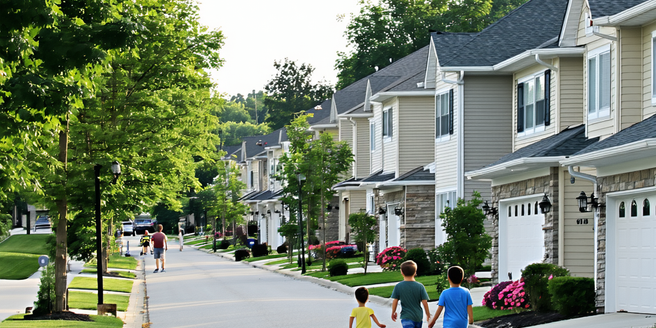Defining Affordable Housing and Its Importance
Affordable housing refers to housing that is reasonably priced relative to the income of individuals and families, ensuring that they do not spend an excessive portion of their income on shelter. The concept is critical because it stabilizes communities and promotes economic growth. It acts as a buffer against economic disparities, enabling equitable opportunities for all individuals. Access to affordable housing is a fundamental right that has long-lasting impacts on social welfare. When housing costs are manageable, families can allocate more resources toward health, education, and other essential needs, contributing to a higher quality of life. Affordable housing is essential for fostering diverse communities and preventing homelessness.
The History and Evolution of Housing Programs
Affordable housing programs have a rich history, tracing back to the early 20th century when the industrial revolution led to severe urban overcrowding. In response, governments began to recognize the need for public housing initiatives. Over the decades, these programs evolved, transitioning from stark public housing blocks to more inclusive policies, incorporating subsidies and tax incentives to encourage private sector involvement. With the rising cost of living, the demand for affordable housing has never been more urgent. Modern programs aim to integrate affordable housing with community development for a holistic approach. This evolution demonstrates a shift towards more comprehensive strategies tackling housing issues comprehensively.
Key Features of Modern Affordable Housing Initiatives
Modern affordable housing programs focus on inclusivity and sustainability. Key elements include a mix of public-private partnerships, where governmental subsidies reduce development costs while private investments boost housing supply. These initiatives emphasize sustainable building practices and energy efficiency, aiming to lower utility costs for residents. Community engagement is crucial in shaping developments that reflect the needs of residents. Innovative designs also contribute to the long-term sustainability of these housing projects. For instance, using recycled materials can dramatically reduce construction waste. Tenant-based rental assistance, such as vouchers, empowers low-income families to choose where they live. Additionally, zoning reforms encourage diverse developments, integrating affordable units within prosperous neighborhoods.
Challenges Faced in Implementing Housing Programs
Despite their importance, affordable housing programs face numerous challenges. One significant obstacle is the shortage of land in urban areas, where demand is highest. High construction costs and bureaucratic hurdles also impede progress. Funding remains a critical challenge, with restrictions and budget cuts affecting program continuity. Additionally, developers are often hesitant to invest without clear financial incentives or assurances. Moreover, there is often resistance from local communities, fearing decreased property values or increased crime rates. To address these concerns, educational initiatives can help inform residents about the benefits of affordable housing. These challenges necessitate innovative solutions and strong collaboration between government agencies, developers, and communities.
Case Studies: Successful Affordable Housing Projects
Examining successful affordable housing projects offers valuable insights for future endeavors. For instance, the Columbia Housing Initiative in Seattle effectively collaborated with non-profit organizations to create inclusive developments. Another example is the Vienna Model, where social housing is integrated with urban infrastructure, providing high-quality living conditions at affordable prices. By studying such examples, policymakers can better understand the elements that contribute to their success. It’s essential to learn from these models to avoid repeating common pitfalls in new projects. These projects highlight the importance of strategic planning, community involvement, and sustainable practices. They prove that with the right approach, affordable housing can thrive and create vibrant communities.
Future Trends and Predictions for Housing Affordability
Looking forward, affordable housing trends are set to embrace technology and innovation. The rise of modular and prefabricated homes promises cost reductions and quicker construction. Additionally, there is an increasing focus on social housing policies that address systemic inequality. Emerging smart housing technologies offer efficient management and reduced costs for residents. With urban populations on the rise, the demand for innovative housing solutions becomes even more critical. As sustainability becomes paramount, green building technologies and renewable energy integration are likely to be standard. Policymakers must adopt adaptive strategies to cater to evolving demographic needs and economic conditions.



